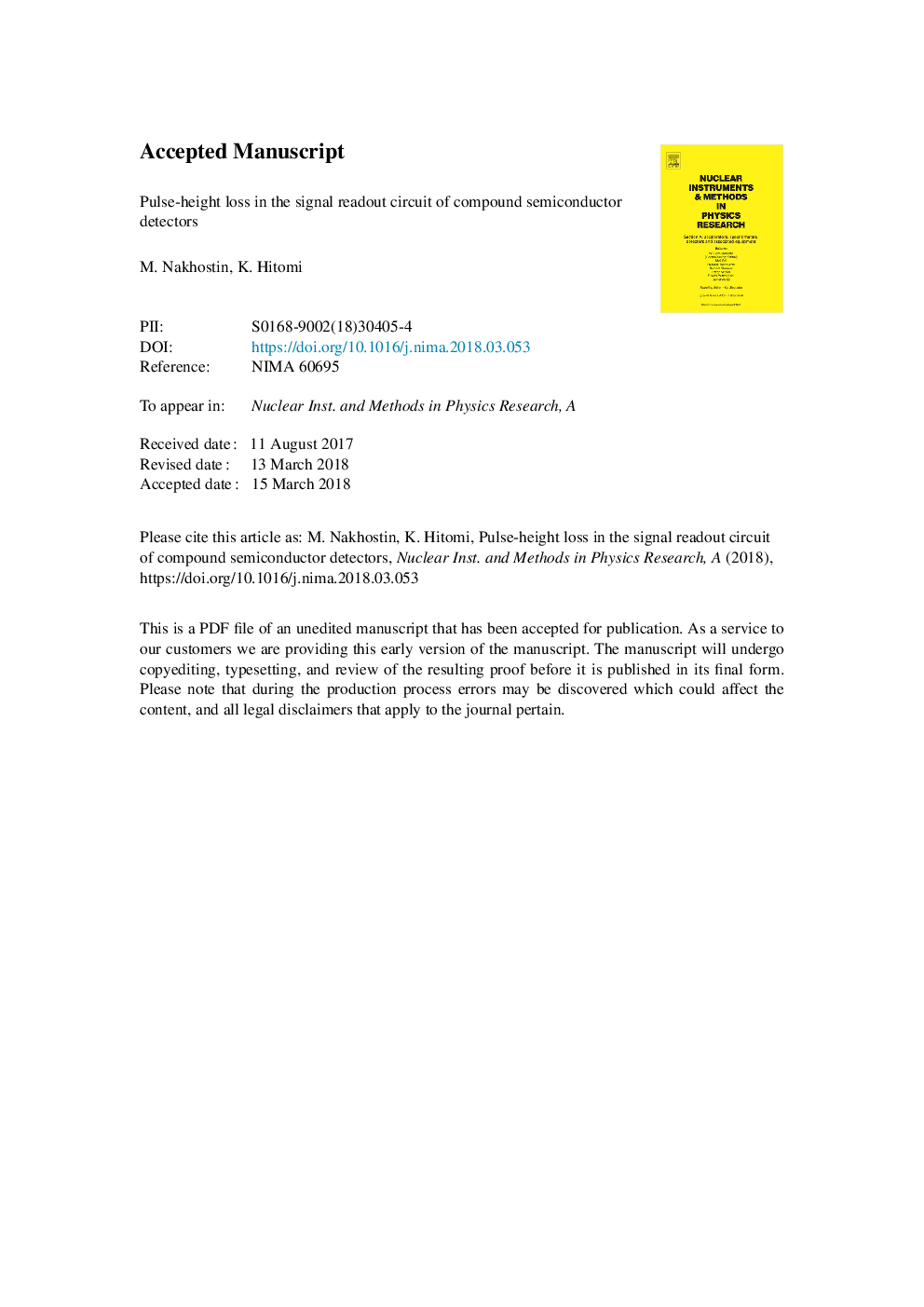| Article ID | Journal | Published Year | Pages | File Type |
|---|---|---|---|---|
| 8166355 | Nuclear Instruments and Methods in Physics Research Section A: Accelerators, Spectrometers, Detectors and Associated Equipment | 2018 | 16 Pages |
Abstract
Compound semiconductor detectors such as CdTe, CdZnTe, HgI2 and TlBr are known to exhibit large variations in their charge collection times. This paper considers the effect of such variations on the measurement of induced charge pulses by using resistive feedback charge-sensitive preamplifiers. It is shown that, due to the finite decay-time constant of the preamplifiers, the capacitive decay during the signal readout leads to a variable deficit in the measurement of ballistic signals and a digital pulse processing method is employed to correct for it. The method is experimentally examined by using sampled pulses from a TlBr detector coupled to a charge-sensitive preamplifier with 150 μs of decay-time constant and 20 % improvement in the energy resolution of the detector at 662 keV is achieved. The implications of the capacitive decay on the correction of charge-trapping effect by using depth-sensing technique are also considered.
Keywords
Related Topics
Physical Sciences and Engineering
Physics and Astronomy
Instrumentation
Authors
M. Nakhostin, K. Hitomi,
